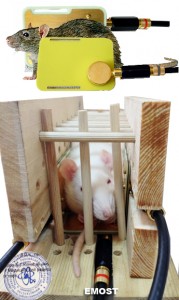result of mesenchymal stem cell treatment
 Result-of-mesenchymal-stem-cell-treatment-OMBNINSK-2013 (PDF)
Result-of-mesenchymal-stem-cell-treatment-OMBNINSK-2013 (PDF)
Science without limits
In-vivo mesenchymal stem cell (and neural stem cells, chromosomic state changing) experiments with rats researcher Mr. Anatoly G. Konoplyannikov) 2013, EMOST procedure, Attila Erdofi-Szabo Ph.D., OBNINSK, Russia
Stem cell reproduction
Stem cells are the most important regenerative cells of the human body. Their number is highest in childhood, and as time passes, it decreases. Our ability to heal from diseases and injuries also depend on stem cells, that’s why it is a huge area of research (and business too). If our stem cell number wouldn’t decrease, moreover, we could reach our own possible peak, then we could preserve our health longer or recover more quickly. Survival rate would be higher with cancer patients, recovery would be much quicker after chemotherapy, and we’d had a better chance to gain back our health. After our successful American and European scientific evidencing, we received an official invitation to the Medical Radiology Center of the Russian Ministry of Health (Obninsk, RU), to demonstrate our scientific credibility on the spot. We accepted the invitation.
(*The effectiveness of our method is verifiable with all independent medical examination processes; success references cited here are reproducible in every independent medical environment!) Our evidencing was conducted under especially strict, bilateral conditions.
“The experiment was conducted on six, 3.5-month old male Wistar rats, each weighing 180 grams. The control group consisted of three rats, which were not submitted to any supplementary impacts, and three other rats were in the experimental group, submitted to low-frequency and low-intensity own electromagnetic signal (EMOST) treatment, generated according to the EMOST method and recommended protocols. The 45-minute long, whole-body treatments were conducted during 2 days, 2 times a day – one before noon and the other in the afternoon.
The next day, both groups were narcotized with Nembutal aqueous solution introduced in the abdominal cavity (60mg/bodyweight kg), and bone marrow cells were extracted from the rats’ pelvic bone marrow. The cells were placed in sterile vials to cultivate a bone marrow mesenchymal stem cell (MSC) culture in a 2 x 105 and 5 x 105 cell concentration.
3 cultures were cultivated in each concentration with each rat, which means 54 bone marrow cell cultures in total. Each culture was recorded on the 9th day of growth, and after their painting, we counted the number of colonies grown on the plastic walls of the cultivation vials, which were created as the result of the mesenchymal stem cell (MSC) proliferation. Results were processed statistically by calculating the average quantity of each planted MSC cell colony per 105 and their margins of error (after defining the regression line between the cell culture planted for cultivation and the number of colonies created). The results of the experiment and calculations are presented in the table below.
As registered in the experiment, the MSC number (156 ± 17) of the bone marrow significantly increased compared to the initial level (p < 0,05), which is proof that the effect of own signals generated with EMOST method is able to activate the mesenchymal stem cell (MSC) group relatively quickly. According to modern views, this group has a pivotal role in the regeneration capacities of a great variety of tissues in the body.”
June 22, 2013
Leader of the Cell and Experimental Radiotherapy Department of FGBU, Medical Radiology Center of the Russian Ministry of Health, winner of the Russian Federation’s Government Award in the field of science and technology, doctor of biology, professor A.G.Konopljannyikov
Thank you for the independent, scientific (non-political) professional interest and research!
Result-of-mesenchymal-stem-cell-treatment-OMBNINSK-2013 (PDF)
“Stem cell formation in adulthood can be enhanced!”